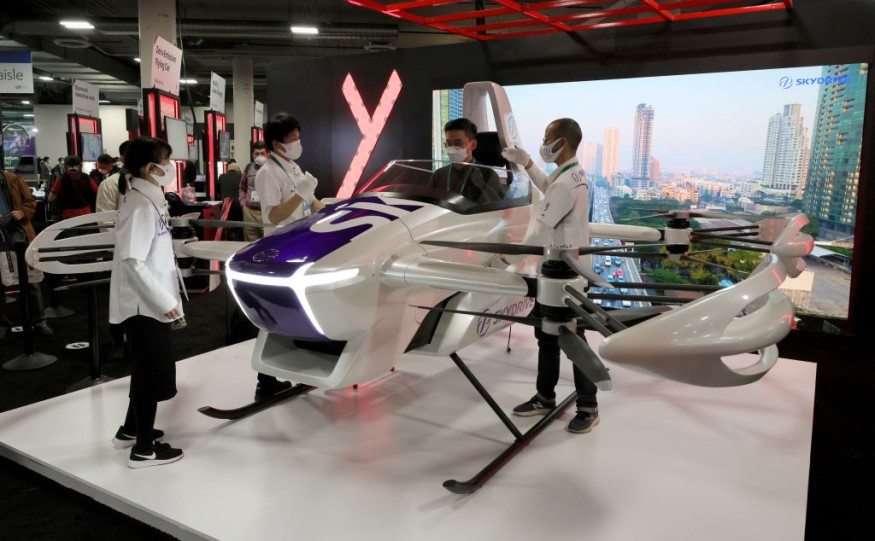
Suzuki Motor Corporation, the Japanese multinational manufacturer of automobiles, motorcycles, all-terrain vehicles, and outboard marine engines, is joining hands with Tokyo-based startup SkyDrive to develop electric, vertical takeoff, and landing (eVTOL) aircraft that will hopefully make flying cars a reality soon.
SkyDrive has already announced its intention of launching a flying taxi service in the future. According to MailOnline, the public could see flying cars in Osaka by 2025 as both companies plan to launch them by then.
An attendee poses for photos in a protoype SkyDrive SD-03 ultra-light, compact flying vehicle that requires no runway at CES 2022 at The Venetian Las Vegas on January 5, 2022 in Las Vegas, Nevada. The 882-pound emission-free electric vehicle uses eight propellers and motors to take off and land vertically and can travel at up to 31 mph.
The Rise of the Industry of Flying Cars
The flying cars will be the fourth mobility business for Suzuki to their automobiles, motorcycles, and outboard motors, the news outlet reported. Meanwhile, SkyDrive is developing a two-seater eVTOL aircraft with plans for full-scale production.
The company is also developing cargo drones to launch a flying taxi service in Osaka by 2025 when the Japanese city hosts the World Expo.
But Suzuki and SkyDrive are not the only car manufacturers interested in flying cars. As Slash Gear reported, Slovakian company AeroMobil launched its version of a flying vehicle called AM NEXT earlier this month.
In a press release, the company claimed that it was the world's first four-seater flying taxi that could transform from road mode to aerial configuration within three minutes. It could also ferry passengers up to 500 miles for city-hoppers. The vehicle will be officially launched in 2027.
Moreover, another Slovakian flying car called AirCar from a company named Klein Vision was given the green light from the authorities. It runs with a BMW engine and can transform within just two minutes.
As the flying car industry booms, more and more manufacturers are offering their flying cars. Other companies developing this type of vehicle are the Swedish startup Jetson Aero with its Jetson One flying car, the Renault with its flying car Air4, and Miami-based design studio The Arsenale.
ALSO READ: Flying Car: Soon a Reality, Canadian Tech Team Comes One Step Closer to Completion of the Invention
How Flying Cars Could Change the World
Flying cars are real and could be commercialized in the coming years, transforming how people commute, work, and live in the following decades.
According to BBC Future, advancements in battery energy densit, materials science and computer simulation have significantly contributed to the development of different types of flying cars, from electric gliders to quadcopter drones and fixed-wing craft.
Although flying cars under development today may not look like those in sci-fi comics or books, they are not that far off. These flying cars are designed with rotors that allow vertical takeoff and landing. Tilting rotors permit efficiency in forwarding flight at a longer distance while flying cars with multi-rotors are quieter during hover flight.
Today, riding flying cars could cost hundreds of dollars per ticket, but manufacturers aim for the cost to go down as the flying car industry becomes competitive. Their goal is not to make flying cars just a toy for the wealthy but also to integrate it into society, so anyone in the urban area could include flying in their options as they travel within the city.
RELATED ARTICLE: Three-Wheeled Flying Car Can Now Legally Operate in European Highways
Check out more news and information on Flying Cars in Science Times.
© 2026 ScienceTimes.com All rights reserved. Do not reproduce without permission. The window to the world of Science Times.












